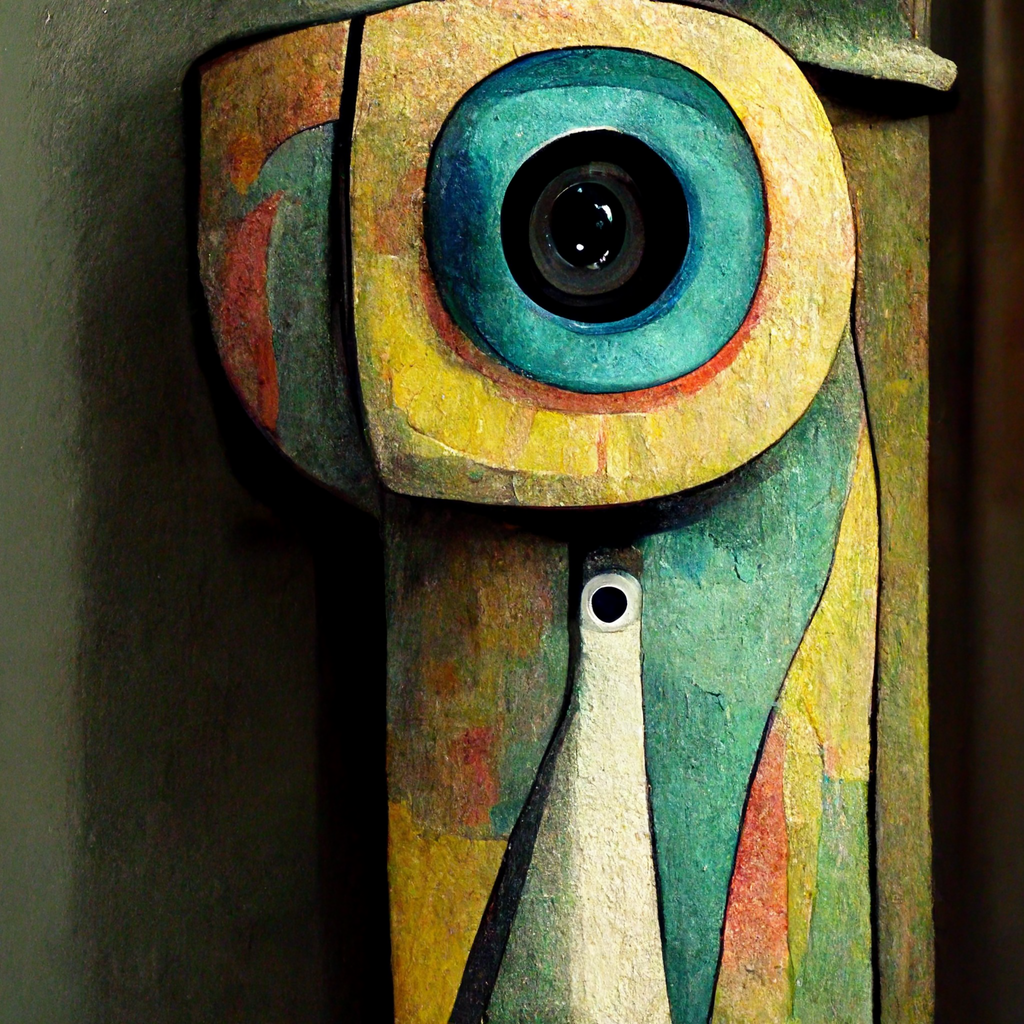Ethical Issues in Creative and Visual Research
Images or other creative expressions generated by participants can offer rich sources of data. What are the ethical issues in such studies, and how can we navigate them? Find examples and guidance in this collection of open-access articles.
Hannes, K., & Parylo, O. (2014). Let’s Play it Safe: Ethical Considerations from Participants in a Photovoice Research Project. International Journal of Qualitative Methods, 13(1), 255–274. https://doi.org/10.1177/160940691401300112
Abstract. The use of images and other visual data in qualitative research projects poses new ethical challenges, particularly in the context of participatory research projects that engage research participants in conducting fieldwork. Little is known about how research participants deal with the ethical challenges involved in conducting fieldwork, or whether they succeed in making balanced ethical judgments in collecting images of identifiable people and places. This study aims to increase our understanding of these ethical challenges. From an inductive analysis of interview data generated from nine participants recently involved in a photovoice research project we conclude that raising awareness about ethical aspects of conducting visual research increases research participants' sensitivity toward ethical issues related to privacy, anonymity, and confidentiality of research subjects. However, personal reasons (e.g., cultural, emotional) and cautions about potential ethical dilemmas also prompt avoidance behavior. While ethics sessions may empower participants by equipping them with the knowledge of research ethics, ethics sessions may also have an unintentional impact on research.
Howell, C., Cox, S., Drew, S., Guillemin, M., Warr, D., & Waycott, J. (2014). Exploring ethical frontiers of visual methods. Research Ethics, 10(4), 208–213. https://doi.org/10.1177/1747016114552685
Abstract. Visual research is a fast-growing interdisciplinary field. The flexibility and diversity of visual research methods are seen as strengths by their adherents, yet adoption of such approaches often requires researchers to negotiate complex ethical terrain. The digital technological explosion has also provided visual researchers with access to an increasingly diverse array of visual methodologies and tools that, far from being ethically neutral, require careful deliberation and planning for use. To explore these issues, the Symposium on Exploring Ethical Frontiers of Visual Methods was held at the University of Melbourne, Australia, on 4 March 2014. The symposium was hosted by the Visual Research Collaboratory, a consortium of Australian and Canadian visual researchers, with support from Melbourne Social Equity Institute, University of Melbourne. The symposium represented the culmination of a process to develop a resource outlining principles of ethical practice for visual researchers and ethics committee members, the Guidelines for Ethical Visual Research Methods, which were launched at the event. The Guidelines present a framework for considering ethical matters in visual research, distinguishing six groups of issues united by an overarching theme: confidentiality; minimizing harm; consent; fuzzy boundaries; authorship and ownership; and representation and audiences.
Humpage, L., Fozdar, F., Marlowe, J., & Hartley, L. (2019). Photovoice and refugee research: The case for a ‘layers’ versus ‘labels’ approach to vulnerability. Research Ethics, 15(3-4), 1-16. https://doi.org/10.1177/1747016119864353
Abstract. ‘Vulnerability’ is a key concept used to understand the ethical implications of conducting refugee-focused research. This case study illustrates the need to follow Luna’s (2009) call for a shift from a ‘labels’ to a ‘layers’ approach to vulnerability by analysing how two university ethics committees responded to issues of informed consent in two similar refugee research projects using the PhotoVoice method. The following commentary argues that, when driven by a research governance regime, ethics review risks viewing refugees through a static label of vulnerability, negatively affecting research viability and data quality. In contrast, a layers approach opens space for understanding the potential for vulnerability amongst refugee research participants while supporting PhotoVoice’s goals of empowerment and facilitating agency. The case study highlights the need for national-level ethics statements that encourage a more flexible approach within research institutions.
Kuri, E. L. (2020). Ethics in Arts-Based Research: Drawing on the Strengths of Creative Arts Therapists. Canadian Journal of Counselling and Psychotherapy, 54(3), 197–219. Retrieved from https://cjc-rcc.ucalgary.ca/article/view/69084
Abstract. Arts-based research (ABR) continues to grow as a dynamic practice that is deeply influenced by critical theory and entwined with social justice aims. This article addresses three important topics at the intersection of ethics and ABR: how researchers and members of research ethics boards articulate and perceive uncertainty within the creative process, who is involved in the research, and how the arts may be incorporated into research in a manner that attends to risks of potential harm and to ways of mitigating these risks. Creative arts therapies will be highlighted regarding skills and training that promote ethical practice in ABR.
MacNeill, K., Bolt, B., Barrett, E., McPherson, M., Sierra, M., Miller, S., Ednie-Brown, P., & Wilson, C. (2021). An ethical engagement: creative practice research, the academy and professional codes of conduct. Research Ethics, 17(1), 73-86. https://doi.org/10.1177/1747016120915950
Abstract. This paper reports on the experiences of creative practice graduate researchers and academic staff as they seek to comply with the requirements of the Australian National Statement on the Ethical Conduct of Research Involving Humans. The research was conducted over a two-year period (2015 to 2017) as part of a wider project ‘iDARE – Developing New Approaches to Ethics and Research Integrity Training through Challenges Presented by Creative Practice Research’. The research identified the appreciation of ethics that the participants acquired through their experience of institutional research ethics procedures at their university. It also revealed a disjunction between the concepts of ethics acquired through meeting institutional research ethics requirements, the notion of ethics that many researchers adopt in their own professional creative practice and the contents of professional codes of conduct. A key finding of the research was that to prepare creative practice graduates for ethical decision-making in their professional lives, research ethics training in universities should be broadened to encompass a variety of contexts and enable researchers to develop skills in ethical know-how.
Meyer, L. E., Porter, L., Reilly, M. E., Johnson, C., Safir, S., Greenfield, S. F., Silverman, B. C., Hudson, J. I., & Javaras, K. N. (2022). Using wearable cameras to investigate health-related daily life experiences: A literature review of precautions and risks in empirical studies. Research Ethics, 18(1), 64–83. https://doi.org/10.1177/17470161211054021
Abstract. Automated, wearable cameras can benefit health-related research by capturing accurate and objective information about individuals’ daily experiences. However, wearable cameras present unique privacy- and confidentiality-related risks due to the possibility of the images capturing identifying or sensitive information from participants and third parties. Although best practice guidelines for ethical research with wearable cameras have been published, limited information exists on the risks of studies using wearable cameras. The aim of this literature review was to survey risks related to using wearable cameras, and precautions taken to reduce those risks, as reported in empirical research. Forty-five publications, comprising 36 independent studies, were reviewed, and findings revealed that participants’ primary concerns with using wearable cameras included physical inconvenience and discomfort in certain situations (e.g. public settings). None of the studies reviewed reported any serious adverse events. Although it is possible that reported findings do not include all risks experienced by participants in research with wearable cameras, our findings suggest a low level of risk to participants. However, it is important that investigators adopt recommended precautions, which can promote autonomy and reduce risks, including participant discomfort.
Michalovich, A., Mayer, Y., Hershler, L. A. D., Bulk, L. Y., Cook, C., Graf, H., Lee, M., Belliveau, G., & Jarus, T. (2022). Through a Glass Brightly: Generative Ethical Tensions in Research-Based Theatre. Qualitative Inquiry, 0(0). https://doi.org/10.1177/10778004221097677
Abstract. This qualitative case study methodically explores ethical tensions that arose in the Research-based Theatre (RbT) project, Alone in the Ring (AitR), as a case. We borrowed Elliot Eisner’s set of tensions in Arts-Based Research (ABR), exploring the extent to which they manifested as ethical tensions in AitR. Following analysis of in-depth interviews with key project members, we identified five areas of ethical tension in AitR, adapting Eisner’s framework to account for the ethical dimensions of the tensions, their generative quality, and their temporal and social dimensions, as they manifested in AitR. Complicating Eisner’s general tensions for ABR, this article advances an adapted, RbT-specific framework with meta-language to reflect on the ethical terrain of RbT using the richness and specificity afforded by a case study. The framework is particularly useful for RbT practitioners seeking to maximize the benefits of RbT for knowledge translation, arts-based inquiry, and community engagement.
Parkin, S., & Coomber, R. (2009). Value in the Visual: On Public Injecting, Visual Methods and Their Potential for Informing Policy (and Change). Methodological Innovations Online, 4(2), 21–36. https://doi.org/10.1177/205979910900400203
Abstract. This paper concerns the application of visual methods within qualitative research and the ways in which they can be developed and applied to a range of settings for applied health (and other policy) purposes. Traditionally visual methods have been used as adjunct means to record data and representations of individuals, groups and cultures. Having emerged from a research tradition deeply rooted within the field of social/cultural anthropology they have been largely understated in more policy-orientated research or that with more practical benefits. Visual research however has potential to be utilised in this way, particularly in behavioural and other health areas, in which ‘added-value’ to ‘traditional’ text-based research findings can be provided. This paper seeks to demonstrate this potential and provide examples of ‘added-value’ with specific reference to a study of public environments appropriated by injecting drug users in an urban location.
Teti, M. (2019). The Murky Ethics of Visual Qualitative Methods: Picturing a Clear Path Forward. International Journal of Qualitative Methods, 18. https://doi.org/10.1177/1609406919884810
Abstract. As a visual qualitative researcher, I believe in the value of methods that include images, such as photos, in the production and interpretation of knowledge (Glaw, Inder, Kable, & Hazelton, 2017). Photovoice in particular—a participatory visual qualitative method in which people take pictures to identify, discuss, and address their challenges (Wang & Burris, 1997)—changed my own observational lens and allowed participant-generated ideas to emerge in my inquiries. As a young HIV researcher, I became discouraged by my own well-intentioned work. I feared that the questions I was asking women about their HIV-related risk behaviors were demoralizing them by assuming solutions (e.g., condom use) that were incompatible with their problems (e.g., relationship violence). Photovoice gave me another perspective. Ten years later, I still use the method to integrate the visions of people living with HIV into the interventions and policies designed to help them (e.g., Teti, French, Bonney, & Lightfoot, 2015).
and
Rosemberg, M.-A. S., & Evans-Agnew, R. (2020). Ethics in Photovoice: A Response to Teti. International Journal of Qualitative Methods, 19. https://doi.org/10.1177/1609406920922734
Abstract. Much has been written about the Photovoice method. With the pervasive uptake of this method, debates about its use and ethical considerations will continue to permeate qualitative researchers’ work. Thus, the timeliness of Teti’s 2019 paper about ethical considerations for Photovoice methods. We concur with Teti’s take on the method. We also further had the discussion on Photovoice ethics by emphasizing that (1) as Photovoice methods evolve, so too should ethical considerations, (2) though processes may vary, there are standard ethical considerations that must be adhered to in Photovoice research, and (3) researcher intentionality is important in considering the digital image as a driver of social change. The potential for Photovoice to contribute to social change remains appealing, especially given the current disparaging economic, political, social, and environmental climate.























Sometimes taking a break from the keyboard to write by hand unleashes creativity.